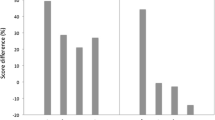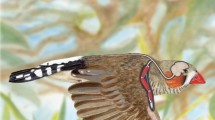Abstract
Various studies on medial olivocochlear (MOC) efferents have implicated it in multiple roles in the auditory system (e.g., dynamic range adaptation, masking reduction, and selective attention). This study presents a systematic simulation of inferior colliculus (IC) responses with and without electrical stimulation of the MOC. Phenomenological models of the responses of auditory nerve (AN) fibers and IC neurons were used to this end. The simulated responses were highly consistent with physiological data (replicated 3 of the 4 known rate-level responses all MOC effects—shifts, high stimulus level reduction and enhancement). Complex MOC efferent effects which were previously thought to require integration from different characteristic frequency (CF) neurons were simulated using the same frequency inhibition excitation circuitry. MOC-induced enhancing effects were found only in neurons with a CF range from 750 Hz to 2 kHz. This limited effect is indicative of the role of MOC activation on the AN responses at the stimulus offset.






Similar content being viewed by others
References
Brown GJ, Ferry RT, Meddis R (2010) A computer model of auditory efferent suppression: implications for the recognition of speech in noise. J Acoust Soc Am 127:943–954
Bruce IC, Sachs MB, Young ED (2003) An auditory-periphery model of the effects of acoustic trauma on auditory nerve responses. J Acoust Soc Am 113:369–388
Carney LH (1993) A model for the responses of low-frequency auditory-nerve fibers in cat. J Acoust Soc Am 93:401–417
Carney LH, Li T, McDonough JM (2015) Speech coding in the brain: representation of vowel formants by midbrain neurons tuned to sound fluctuations. eNeuro. https://doi.org/10.1523/ENEURO.0004-15.2015
Chintanpalli A, Jennings SG, Heinz MG, Strickland EA (2012) Modeling the anti-masking effects of the olivocochlear reflex in auditory nerve responses to tones in sustained noise. J Assoc Res Otolaryngol 13:219–235
Fant G (1973) Speech sounds and features. The MIT Press, Cambridge
Ferry RT, Meddis R (2007) A computer model of medial efferent suppression in the mammalian auditory system. J Acoust Soc Am 122:3519–3526
Greenwood DD (1990) A cochlear frequency-position function for several species—29 years later. J Acoust Soc Am 87:2592–2605
Guinan JJ (2006) Olivocochlear efferents: anatomy, physiology, function, and the measurement of efferent effects in humans. Ear Hearing 27:589–607
Guinan JJ, Gifford ML (1988) Effects of electrical-stimulation of efferent olivocochlear neurons on cat auditory-nerve fibers. 1. Rate-level functions. Hear Res 33:97–113. https://doi.org/10.1016/0378-5955(88)90023-8
Guinan JJ, Warr WB, Norris BE (1984) Topographic organization of the olivocochlear projections from the lateral and medial zones of the superior olivary complex. J Comp Neurol 226:21–27
Guinan JJ, Lin T, Cheng H, Cooper NP (2006) Medial Olivocochlear efferent effects on basilar-membrane and auditory-nerve responses to clicks: evidence for a new motion within the cochlea. In: Nuttall AL, Ren T, Gillespie P, Grosh K, de Boer E (eds)Auditory mechanisms: processes and models. World Scientific, Singapore, pp 3–16. https://doi.org/10.1142/9789812773456_0001
Ibrahim RA, Bruce IC (2010) Effects of peripheral tuning on the auditory nerve’s representation of speech envelope and temporal fine structure cues. In: Lopez-Poveda E, Palmer A, Meddis R (eds) The neurophysiological bases of auditory perception. Springer, Berlin, pp 429–438
Jennings SG, Heinz MG, Strickland EA (2011) Evaluating adaptation and olivocochlear efferent feedback as potential explanations of psychophysical overshoot. J Assoc Res Otolaryngol 12:345–360. https://doi.org/10.1007/s10162-011-0256-5
Krishna BS, Semple MN (2000) Auditory temporal processing: responses to sinusoidally amplitude-modulated tones in the inferior colliculus. J Neurophysiol 84:255–273
Liberman MC, Dodds LW, Pierce S (1990) Afferent and efferent innervation of the cat cochlea: quantitative analysis with light and electron microscopy. J Comp Neurol 301:443–460
Mao JW, Carney LH (2015) Tone-in-noise detection using envelope cues: comparison of signal-processing-based and physiological models. J Assoc Res Otolaryngol 16:121–133
Nelson PC, Carney LH (2004) A phenomenological model of peripheral and central neural responses to amplitude-modulated tones. J Acoust Soc Am 116:2173–2186
Nelson PC, Carney LH (2007) Neural rate and timing cues for detection and discrimination of amplitude-modulated tones in the awake rabbit inferior colliculus. J Neurophysiol 97:522–539
Pascal J, Bourgeade A, Lagier M, Legros C (1998) Linear and nonlinear model of the human middle ear. J Acoust Soc Am 104:1509–1516
Rees A, Palmer AR (1988) Rate-intensity functions and their modification by broadband noise for neurons in the guinea pig inferior colliculus. J Acoust Soc Am 83:1488–1498
Salimi N, Zilany MSA, Carney LH (2017) Modeling responses in the superior paraolivary nucleus: implications for forward masking in the inferior colliculus. J Assoc Res Otolaryngol 18(3):441–456
Seluakumaran K, Mulders WHAM, Robertson D (2008) Effects of medial olivocochlear efferent stimulation on the activity of neurons in the auditory midbrain. Exp Brain Res 186:161–174
Shera CA, Guinan JJ, Oxenham AJ (2002) Revised estimates of human cochlear tuning from otoacoustic and behavioral measurements. Proc Natl Acad Sci 99:3318–3323
Smalt CJ, Heinz MG, Strickland EA (2014) Modeling the time-varying and level-dependent effects of the medial olivocochlear reflex in auditory nerve responses. J Assoc Res Otolaryngol 15:159–173
Warr WB, Guinan JJ (1979) Efferent innervation of the organ of Corti: two separate systems. Brain Res 173:152–155
Watkins PV, Barbour DL (2011) Level-tuned neurons in primary auditory cortex adapt differently to loud versus soft sounds. Cereb Cortex 21:178–190. https://doi.org/10.1093/cercor/bhq079
Wiederhold M, Kiang N (1970) Effects of electric stimulation of the crossed olivocochlear bundle on single auditory-nerve fibers in the cat. J Acoust Soc Am 48:950–965
Zhang X, Heinz MG, Bruce IC, Carney LH (2001) A phenomenological model for the responses of auditory-nerve fibers: I. Nonlinear tuning with compression and suppression. J Acoust Soc Am 109:648–670
Zilany MSA, Bruce IC (2006) Modeling auditory-nerve responses for high sound pressure levels in the normal and impaired auditory periphery. J Acoust Soc Am 120:1446–1466
Zilany MSA, Bruce IC (2007) Representation of the vowel (epsilon) in normal and impaired auditory nerve fibers: model predictions of responses in cats. J Acoust Soc Am 122:402–417
Zilany MSA, Bruce IC, Nelson PC, Carney LH (2009) A phenomenological model of the synapse between the inner hair cell and auditory nerve: long-term adaptation with power-law dynamics. J Acoust Soc Am 126:2390–2412
Zilany MSA, Bruce IC, Carney LH (2014) Updated parameters and expanded simulation options for a model of the auditory periphery. J Acoust Soc Am 135:283–286
Acknowledgements
This research was supported by University Malaya Research Grants (UMRG) RP016B-13AET and RP006-13ICT from the Institute of Research Management & Monitoring (IPPP) University of Malaya as well as the Research University Grant (RU Faculty) GPF039A-2018 from the Faculty of Engineering, University of Malaya. We would also like to acknowledge the insightful comments and suggestions from two anonymous reviewers in the preparation of this manuscript.
Author information
Authors and Affiliations
Corresponding author
Additional information
Publisher’s Note
Springer Nature remains neutral with regard to jurisdictional claims in published maps and institutional affiliations.
Rights and permissions
About this article
Cite this article
Kwan, T.J.M., Zilany, M.S.A., Davies-Venn, E. et al. Modeling the effects of medial olivocochlear efferent stimulation at the level of the inferior colliculus. Exp Brain Res 237, 1479–1491 (2019). https://doi.org/10.1007/s00221-019-05511-4
Received:
Accepted:
Published:
Issue Date:
DOI: https://doi.org/10.1007/s00221-019-05511-4




